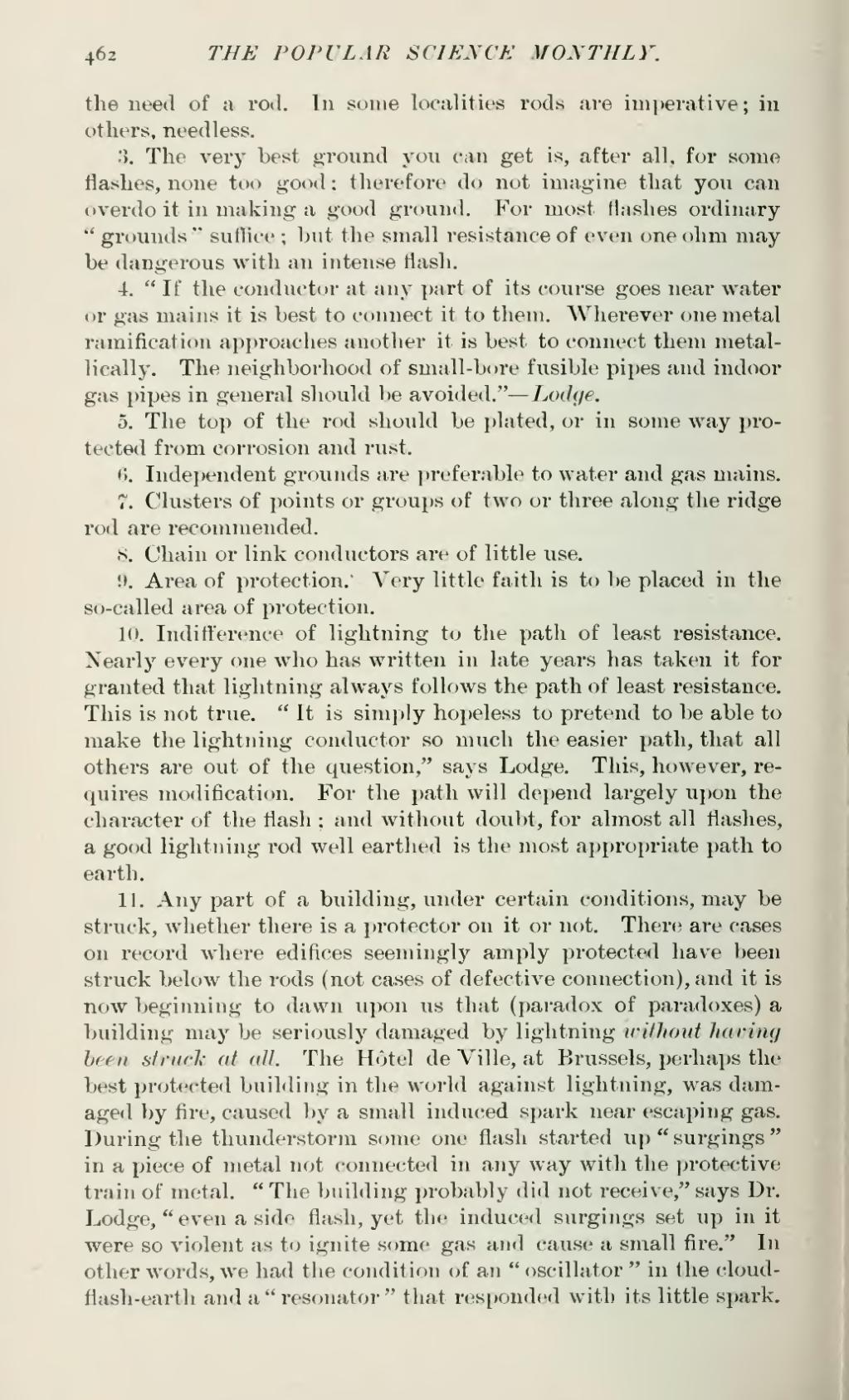the need of a rod. In some localities rods are imperative; in others, needless.
3. The very best ground you can get is, after all, for some flashes, none too good; therefore do not imagine that you can overdo it in making a good ground. For most flashes ordinary "grounds" suffice; but the small resistance of even one ohm may be dangerous with an intense flash.
4. "If the conductor at any part of its course goes near water or gas mains it is best to connect it to them. Wherever one metal ramification approaches another it is best to connect them metallically. The neighborhood of small-bore fusible pipes and indoor gas pipes in general should be avoided."—Lodge.
5. The top of the rod should be plated, or in some way protected from corrosion and rust.
6. Independent grounds are preferable to water and gas mains.
7. Clusters of points or groups of two or three along the ridge rod are recommended.
8. Chain or link conductors are of little use.
9. Area of protection.' Very little faith is to be placed in the so-called area of protection.
10. Indifference of lightning to the path of least resistance. Nearly every one who has written in late years has taken it for granted that lightning always follows the path of least resistance. This is not true. "It is simply hopeless to pretend to be able to make the lightning conductor so much the easier path, that all others are out of the question," says Lodge. This, however, requires modification. For the path will depend largely upon the character of the flash; and without doubt, for almost all flashes, a good lightning rod well earthed is the most appropriate path to earth.
11. Any part of a building, under certain conditions, may be struck, whether there is a protector on it or not. There are cases on record where edifices seemingly amply protected have been struck below the rods (not cases of defective connection), and it is now beginning to dawn upon us that (paradox of paradoxes) a building may be seriously damaged by lightning without having been struck at all. The Hôtel de Ville, at Brussels, perhaps the best protected building in the world against lightning, was damaged by fire, caused by a small induced spark near escaping gas. During the thunderstorm some one flash started up "surgings" in a piece of metal not connected in any way with the protective train of metal. "The building probably did not receive," says Dr. Lodge, "even a side flash, yet the induced surgings set up in it were so violent as to ignite some gas and cause a small fire." In other words, we had the condition of an "oscillator" in the cloud-flash-earth and a "resonator" that responded with its little spark.

